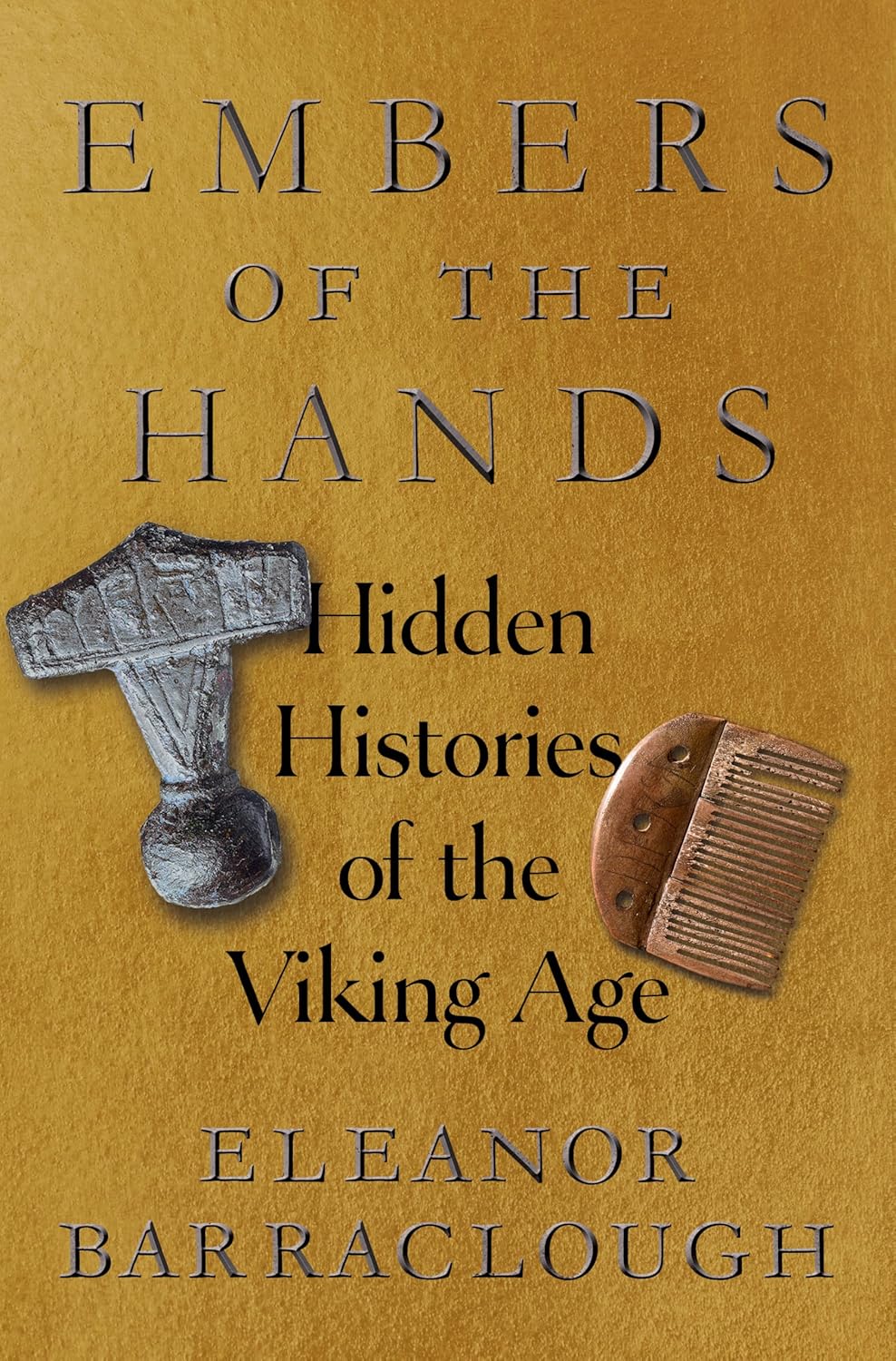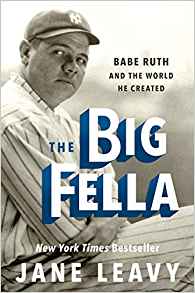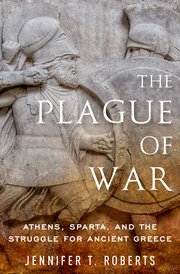Embers of the Hands: Hidden Histories of the Viking Age
- By Eleanor Barraclough
- W.W. Norton & Company
- 384 pp.
- Reviewed by Anne Cassidy
- January 6, 2025
The legendary pillagers led charmingly ordinary home lives.

The tomb was prehistoric, but the graffiti on it came much later — the work of Vikings killing time by carving the equivalent of “Kilroy was here” into a sandstone slab. Their bored scribblings now comprise one of the largest collections of runic inscriptions outside of Scandinavia. I’m glad I climbed through the narrow passageway into the burial mound at Maeshowe in Orkney, Scotland, a few years ago to see the impressive carvings firsthand, especially now that I’ve read Eleanor Barraclough’s Embers of the Hands: Hidden Histories of the Viking Age.
Barraclough, a professor of environmental history at Bath Spa University in England, makes the past come alive in this fact-filled volume. She introduces us not just to the Vikings of raids and longships but also of combs, toys, game pieces, and other ephemera of ordinary lives — the “embers of the hands” she celebrates in the book’s title, the “glowing remnants that survive when the bright flame of a life has vanished.”
The phrase “embers of the hands” is a kenning, a Viking word puzzle, which in this case means gold, part of a verse composed in the 11th century CE.
The past, like a kenning, is a riddle that needs to be solved, and Barraclough takes us through four centuries and across three continents to ferret out the “hidden histories” of her subject. Here are ice skates made of cow bones (small for most of the feet that wore them), buckles fashioned from walrus ivory (because Greenland was short on metal), and a comb crafted from a deer antler (Vikings were known for their meticulous grooming habits). Through these and other humble items recovered from graves, bogs, and middens, we can learn much about the fascinating people who left a mark on the world with their explorations, language, and warrior legends.
The Viking Age lasted from roughly 750 to 1100 CE, but “the embers of history come from fires that were lit long before any official dates used to define them, and continued to smolder long afterwards.” Which means that even as late as 1530, Vikings from Greenland’s Eastern Settlement were being buried in the Herjolfsnes graveyard, home to a well-preserved cache of clothing made from the coarse woolen fabric known as wadmal.
Also found in Herjolfsnes was a runic stick with the inscription, “This woman, who was called Gudveig, was laid overboard in the Greenland Sea.” Though the Viking Age had strong oral traditions, it was mostly non-literate — with the exception of runes, which exist at the intersection of text and object and put us “within touching distance of the people of the past,” notes Barraclough. In this case, we learn not only of Gudveig’s existence but also of the perilous voyage from Iceland to Greenland. According to a 13th-century document, about half the ships that set out didn’t make it. But that didn’t stop Vikings from pushing even farther west, reaching Newfoundland (the edge of North America) around the year 1000.
While the Vikings’ drive to acquire territory is not in question — raids extended east to Novgorod, west to the British Isles, and south to Constantinople — it wasn’t all raping and pillaging. There was also integration and settlement and all the details of daily life that go along with them. From Bryggen, a medieval harborside district in Bergen, Norway, comes a stick into which is carved the runic message, “Gyda says that you should go home.” These are the “scrappy Post-it notes, everyday text messages and crude toilet graffiti of their time,” Barraclough writes.
Vikings also left their mark through their sagas and beliefs; through burial mounds like the one I explored in Scotland; and through their gods, including Thor, Odin, and Freyja, and their stories. As she does throughout the book, Barraclough reminds us that much of what we know of Norse history and mythology came to us centuries after it happened — and through the filter of Christianity — making us question the extent to which these stories represent what ordinary people believed. For confirmation, we must look elsewhere. For instance, place names with Thor and Odin were widespread in Scandinavia, verifying the popularity of these gods at the time.
One of the most interesting parts of the book is this “process talk.” Barraclough doesn’t just explore the Viking Age; she explores history itself. And she brings it alive with vivid descriptions, such as of the weaving room on a Greenland farm: “noisy, busy, smelly places, sharp with the scent of lanolin from the wool and urine for treating the cloth.” Like the other ephemera in the narrative, textiles matter. “The Norse word heimr means both ‘home’ and ‘world,’” Barraclough explains. “The fact that the Norse were able to transplant one to the other depended on what women did in the weaving rooms.”
Women weaving, children skating, irate wives ordering their husbands home from the pub — these are the warp and weft of day-to-day life. But when they happened more than a thousand years ago, they leave few traces. Luckily for us, Barraclough has masterfully resurrected them.
Anne Cassidy has been published in many national magazines and newspapers, including the Washington Post, the New York Times, and the Christian Science Monitor. She blogs daily at “A Walker in the Suburbs.”

